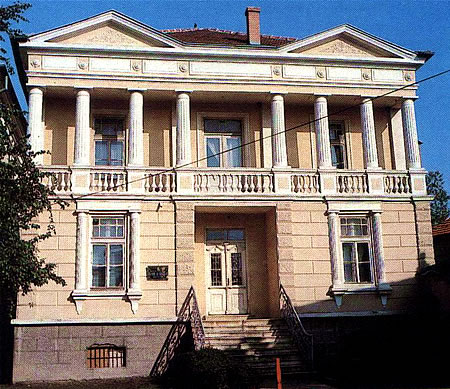Bitola is situated in the southern part of Macedonia, in the Pelagonija Valley, and has been inhabited since prehistoric times, from which many settlements date. The town was founded by Illyrian tribes in the middle of the 7th century AD. The archeological excavations on the Velusina Hill, Porodin Hill, and others date from the Neolith. The excavations found at Poplevec, Visin Rid, and other places date from Eneolith. The findings in the mounds close to the villages of Radobor, Kanino, Karamani from the Bronze Age revealed some very rich specimens, the originality of which has generated special interest in the world of science.
Bitola was part of Serbia in the 14th century and since the end of the 14th century until 1912 it was under Turkish rule. For several centuries Moslems were the majority in this city, while the villages were populated with Macedonian Slavs. Bitola was given the name of Monastiri (Monastery). More Islamic buildings were constructed in the city during the Ottoman rule. In the 16th century Bitola was populated by a new ethnic group, the Jews, who came from Portugal and Spain, fleeing the persecution of the Inquisition. By the end of the 18th century Bitola and its surroundings got another compact ethnic group -- the Vlachs. Struggling for emancipation from the Greek Patriarchate, the Macedonian population of Bitola established its own municipality, schools, and churches, in which ceremonies were held in Slavic. In the 19th century Bitola grew into a military, administrative, and political center of the Turkish Empire, which resulted in the development of many crafts and trades. Bitola became a developed craftsman’s center. The father of modern Turkey, Mustafa Kemal Ataturk, was educated in Bitola. Today the house is a city museum, with one room dedicated to Ataturk. The Monastir congress of 1908, which defined the modern Albanian alphabet, was held in Bitola. Due to its size and importance, Bitola was the number two city, after Thessaloniki, in the European part of the Ottoman Empire. Bitola traders used to trade with Venice, Vienna, Paris, London, and Leipzig.
Today Bitola is a sister city with Epinal (France), Treleborg (Sweden), and Rockdale (Australia). Bitola is the seat of the second Macedonian university and there are also 27 primary schools and seven secondary schools with a total of 5,500 students.

Over almost 60 years the theatre ensemble has had about 500 premiere performances of famous works of national and internationally known classical and modern drama writers. The organized museum activities date from as early as 1934. The Gallery of Modern Graphics was established in the Arts Gallery. Included in this architectural unit are both the sacral and profane Christian and Islamic monuments and architectural complexes and ambient units. Famous sacral monuments are the cathedral of St. Dimitrija (1830), the churches of Sv. Nedela (1863), Sv. Bogorodica (1870), etc. Famous Islamic monuments are the Isak Mosque (16th century), Yeni Mosque (16th century), Haydar Kadi Mosque (16th century), etc., while from the profane period are the Yeni Bath (17th century), the Clock Tower (17th century), the Prison Tower (17th century), the Turkish Military School (19th century). The old market place "Stara Carsija" (Old Bazaar) and the covered market "Bezisten" are from the urban complex. Bitola of tomorrow is growing into a modern industrial, cultural, and university center.
back |